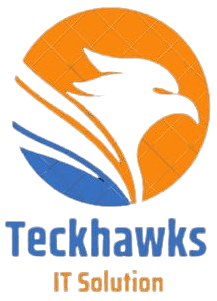What are web1, web2 and web3 concepts?
Web 1.0:
Web 1.0 was the first generation of internet websites created before the arrival of the World Wide Web 2.0. Unlike today’s online world where everything is connected, Web 1.0 websites were standalone and often times only accessible via dial-up connections. These sites included plain text, images, and static pages without any interactive features or multimedia content. Websites back then were simple and had few functions. Since people started using the internet, Web 1.0 grew and evolved into the now popular Web 2.0.
Web 2.0:
Web 2.0 refers to the second generation of Internet technology, often referred to as Web 1.x, being replaced by Web 3.0. It represents a massive shift in how we think about information exchange, collaboration, participation and social networking. Web 2.0 differs from Web 1.0 by being based on user-driven content rather than corporate controlled content. Its users are given greater control over their own data and its applications allow people to create tools that enable them to share, collaborate, and co-author content online.
Some of these features include search engine optimization (SEO), wikis, blogs, podcasts, video sharing sites, mashups, tagging systems, collaborative filtering, RSS feeds, social bookmarking, tagging, user-generated content, social networks, microblogging and aggregation services, communities, forums, directories, personal profiles, location-based social networking, blogging, and photo/video sharing websites.
Web 1.0 vs. Web 2.0:
The evolution of the Internet has been constant since its creation. However, many aspects of the new technology have changed throughout the years. When the first website was created, the World Wide Web was not what it is today. Today, we use social networking sites, mobile devices, apps, cloud computing, search engines, and more to access information. In Web 1.0, these advanced technologies did not exist. Therefore, websites were developed with basic HTML code and no interactive or multimedia capabilities. As time progressed, websites got more complex and advanced. Nowadays, people use the internet to connect with friends, family, and businesses. Websites nowadays allow users to upload rich media, add interactivity, and create social networks.
Web 3.0:
Web 3.0 refers to the third generation of web technology based on the evolution of the internet. In the past, web technologies were built around the client-server model where users would access server applications via a browser on their desktop computer or laptop. As web technologies evolved, they became increasingly accessible to mobile devices. But the mobile revolution was not enough to satisfy the demand for web services. To address these issues, two new generations of web technologies—REST (Representational State Transfer) and JSON (JavaScript Object Notation)—were introduced. These newer technologies allow developers to build scalable web services that can be accessed using simple HTTP requests. These web services can then be consumed using any type of device including smartphones, tablets, smart watches, and sensors.
Today, we live in a web 3.0 society where we use smartphones everywhere. We communicate via our phones, watch movies and TV shows online, play games, shop online, and do many more activities that require connectivity.
In this post, I'll list some of the ways companies have implemented web 3.0 technologies into their businesses to help them stay competitive and provide a superior customer experience.
1. Customer Relationship Management (CRM)
Customer relationship management is not just about collecting data from customers anymore. CRM software provides real-time access to the customer's information in order to improve sales conversion rates and customer satisfaction. Companies are able to segment customers based on demographic variables, interests, and behavior patterns, and send targeted messages to these segments using personalization tools.
2. Social Media Marketing
Social media marketing uses various forms of social media platforms to promote products or brands. Nowadays, most people spend most of their free time on social networks like Facebook, Instagram, and Snapchat. Therefore, it makes sense for marketers to leverage this to reach consumers who would otherwise never hear about their brand.
There are numerous platforms where social media marketing takes place. However, the two most popular platforms are Facebook and Twitter. Consumers regularly visit those platforms to get the latest updates, news, and rumors. So, if your business does not have a strong social media presence, you are leaving money on the table.
3. Mobile Applications
Mobile apps are small pieces of software that run on a device that connects to the internet. Apps allow users to engage directly with various products or services without having to go through a computer. Users download apps through app stores like Google Play Store, Apple App Store, Amazon Appstore, Windows Store, Blackberry App World, etc.
These apps can be used for everything from social interaction and communication to productivity and gaming. Today, almost every smartphone comes preloaded with several useful apps that make our lives easier. For instance, people use apps to make payments at restaurants and buy groceries, pay bills, keep track of expenses, find entertainment, play games, read books and magazines, listen to music, etc.
4. Blockchain Technology
Blockchain technology is a digital innovation that uses distributed ledger technology (DLT) to make transactions more secure and transparent. DLT networks use cryptographic techniques such as encryption, hashing, and public/private key pairs to provide security services to users while offering transparency to administrators who maintain the network. There are many types of blockchain networks, each having its own advantages and disadvantages. Bitcoin is the first widely known example of blockchain technology. Other examples include Ethereum, Ripple, Hyperledger, etc.
5. Wearable Tech
Wearable tech may be defined as wearable electronics, devices, software, and systems used to collect information from consumer products. A wide variety of wearable gadgets exist today. Examples include fitness trackers, smartwatches, activity monitors, smart glasses, smart jewelry, contact lenses, and body patches.



